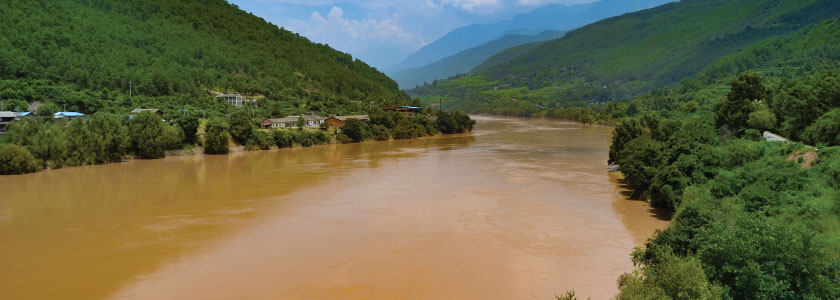New DNA analyses show Asian migration patterns and links to early agriculture

DNA samples taken from the remains of people who lived in China are helping to shed light on how the rise in agriculture affected settlement patterns and migration thousands of years ago.
One recent study, published in Nature Communications, found that crop domestication was associated with an influx of new people from other areas during the Neolithic and Bronze ages. A second study, published in Science, shows that many East Asians descend from two once-distinct groups who started to mix after agriculture gained a foothold in the region some 10,000 years ago.
In the first study, researchers studied 55 genomes from 7,500 to 1,700 years ago from the Yellow, West Liao, and Amur River regions of China and found that those in the Yellow River are closely linked to today’s residents of southern China and broader Southeast Asia, while in the West Liao area, the rise in farming in the Late Neolithic era was correlated with stronger ties to people from the Amur River area.
“Our results suggest a link between changes in subsistence strategy and human migration, and fuel the debate about archaeolinguistic signatures of past human migration,” wrote authors Ning, et al.
In the second study, researchers obtained genomic data from 26 ancient individuals in northern and southern East Asia dating from 9,500 to 300 years ago and found that genetic differentiation has narrowed over time “reflecting a major episode of admixture involving northern East Asian ancestry spreading across southern East Asia after the Neolithic, transforming the genetic ancestry of southern China.”
Today’s East Asians descend from people who left Africa starting about 100,000 years ago, but genetic analyses of these people have been few and far between.
During the Neolithic period of about 10,000 to 6,000 years ago, people from the two East Asian geographic areas—the north and south—started to interbreed.
This suggests that farming in East Asia could have spread through mixing of farmers and hunter-gatherers, noted Nature. “That’s different from what ancient-genome studies have found in western Eurasia, where farmers with Middle Eastern ancestry largely replaced hunter-gatherers in Europe.”
As this was happening, farmers in the Yellow River Basin were also moving west, notes a third study which is still in the preprint stage. This movement likely dispersed Mongolic and Tungusic people living in what is not Mongolia and eastern Siberia.
“Analyzing 20 Yellow River Basin farmers dating to ∼3000 BCE, we document a population that was a plausible vector for the spread of Sino-Tibetan languages both to the Tibetan Plateau and to the central plain where they mixed with southern agriculturalists to form the ancestors of Han Chinese,” noted Wang, et al.
The study in Science and that of Wang, et al., further show that Neolithic residents of China’s coast also set sail, with ancestry from southeastern China showing up in Neolithic people from both islands in the Taiwan Strait as well as far-flung Vanuatu. Genetic evidence of these migrations backs up archaeological evidence found previously.
Writing in Nature, Ning, et al. note that the Yellow and West Liao populations were based on millet farming, which perhaps ebbed and flowed in response to climate variables.
“Although many archeologists associated this subsistence switch with a response to the climate change, it remains to be investigated whether substantial human migrations mediated these changes,” they wrote, explaining that hunting, fishing, and animal husbandry supplemented millet, barley, and legumes.”
In a separate Science article, authors Lipson, et al., gave credence to that idea, writing, “Overall, Southeast Asia shares common themes with Europe, Oceania, and sub-Saharan Africa, where ancient DNA studies of farming expansions and language shifts have revealed similar instances of genetic turnover associated with archaeologically attested transitions in culture.”
The ultimate goal of the genetic investigations of early Asians, suggests Nature, is determination of whether the first Homo sapiens in the region interbred with now-extinct (obviously) Denisovans.
